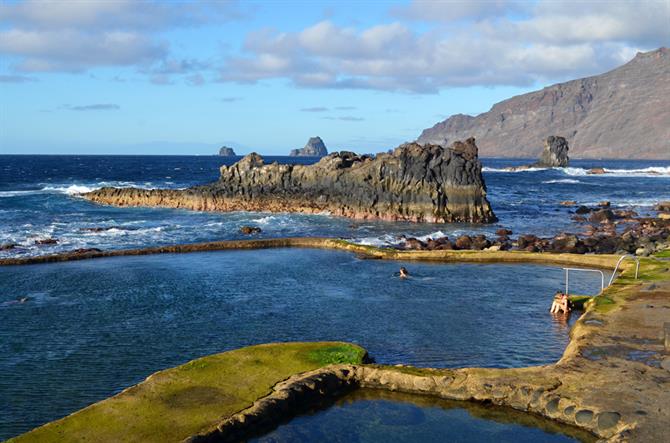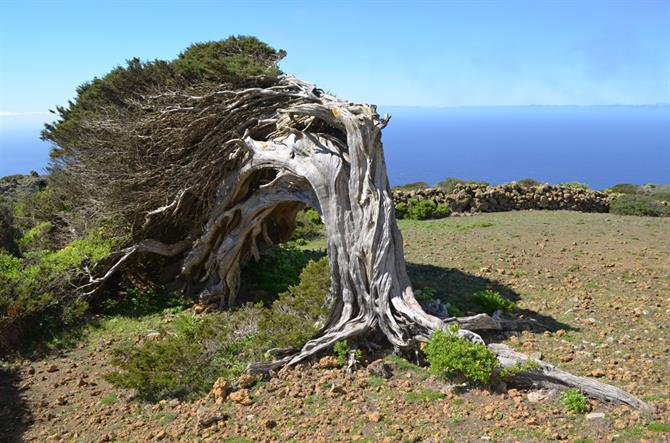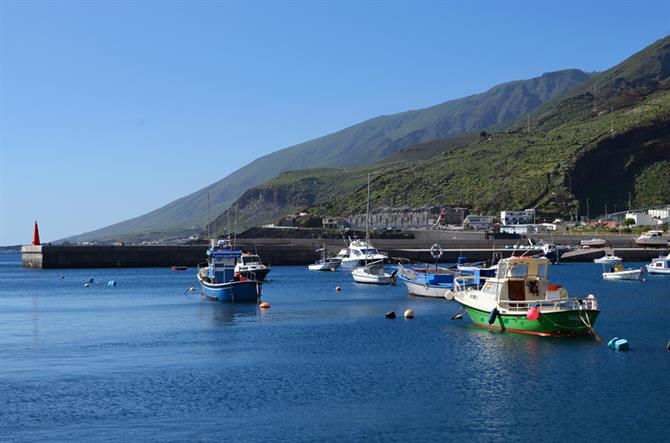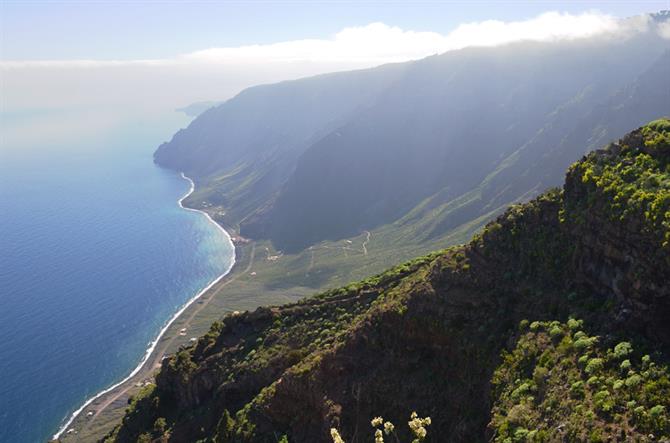El Hierro is a Canary Island not many people know about despite it once being the end of the world; the last place before the sea poured off the edge. Beyond El Hierro on an ancient map you might even see the phrase 'here be dragons'.
El Hierro's other name, its nickname, is Meridian Island. For centuries the little island was the location of the Zero Meridian, the line of longitude marking the most westerly point of the world.

The undersea volcanic eruption just off El Hierro's south coast in 2011/2012 caused barely a ripple in the British tabloids despite its proximity to the tourist magnets of Tenerife and Gran Canaria. It sits quietly minding its own business out in the Atlantic, forgotten by all but the most inquisitive of travellers. In the first quarter of 2015 both Fuerteventura and Lanzarote welcomed over a million visitors each. On Gran Canaria it was closer to two million, and on Tenerife two and a half million visitors. On El Hierro, the figure was just over five thousand.
And yet it is probably the most magical and charming of all the Canary Islands. It has also been a UNESCO Biosphere Reserve since 2002.
What is a UNESCO Biosphere Reserve?
To be designated a Biosphere Reserve, specific areas have to show that there is a strong historic link between man and nature. For a fuller explanation see our article on Anaga on Tenerife being designated a Reserve in 2015.

Why is El Hierro a UNESCO Biosphere Reserve?
El Hierro is the smallest, youngest and possibly greenest of the Canary Islands. Much of the island is lush, covered in trees including pine and evergreen laurel forests. One area boasts one of the most unusual collected of trees you'll find anywhere; silver twisted junipers (sabinas) with unruly, windswept branches which give the trees the appearance of a witch having a bad hair day.
The El Hierro highlands have more in common with the north of England than the arid lands of the eastern Canary Islands – sheep are woolly and shepherds look as hard as granite. On the coast fisherman worked with the island's authorities to create a marine reserve at La Restinga, taking a long term, sustainable approach to their environment. The sea around El Hierro is rich with marine life, attracting divers from all over the world.

This respect for the environment sets El Hierro apart from its neighbours where, on occasion, development hasn't always been sympathetic to the land. Lanzarote's UNESCO Biosphere Reserve Status was under threat a few years ago because politicians strayed from the path set down by Canarian eco visionary Cesár Manrique.
El Hierro isn't resting on its laurels. Having Biosphere Reserve status isn't enough, the environmentally aware islanders are seeking Geo-Park status, which would make it the first island in the world to have both titles. The island is also aiming be the first in the world which is completely self-sufficient in energy consumption thanks to a innovative hydro-eolic plant. In 2015 there were short periods when the whole island was powered by either wind or water.
Like I mentioned, El Hierro really is the greenest Canary Island... in more ways than one.

El Hierro Biosphere Reserve highlights
If I could only pick three places to visit on El Hierro, these would be my choices:
Sabine forest – These enchanting, and possibly enchanted, trees in the hills on the western end of El Hierro have to be seen to be believed.
Sunset from El Golfo– More specifically sunset with a beer on the terrace of what was the world's smallest hotel on the coast at Las Puntas.
Under the water – El Hierro is simply the best place for diving in the Canary Islands.
